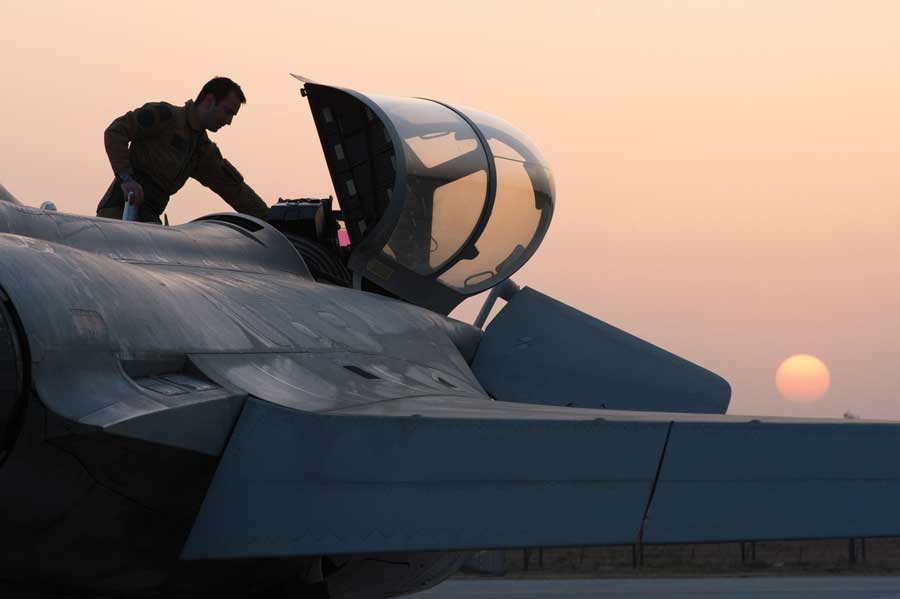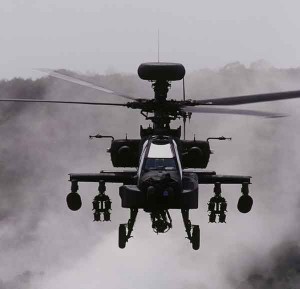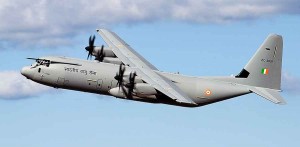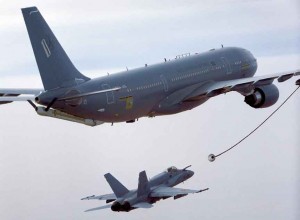Various devices or techniques to enhance or intensify military force have existed perhaps from the earliest period of human conflict but the term “force multipliers” has become popular in military circles only in the last few decades. According to Wikipedia, “Force multiplication, refers to an attribute or a combination of attributes which make a given force more effective than that same force would be without it.” Hence a force multiplier is anything that substantially enhances the combat potential, impact and effectiveness of a given force. The commonly accepted force multipliers in the domain of air power include Airborne Warning and Control System (AWACS) and Airborne Early Warning and Control (AEW&C) aircraft, Flight Refuelling Aircraft (FRA), Precision Guided Munitions (PGM), Electronic Countermeasures (ECM), Unmanned Aerial Vehicles (UAV), stealth capability and military satellites.
There is finally light at the end of the tunnel in the epic saga of the Medium Multi-Role Combat Aircraft (MMRCA)…
The cold reality, that the prospect of ever acquiring 42 combat squadrons is relentlessly receding, is beginning to dawn on the Indian Air Force (IAF). Although the target is formally scheduled to be achieved by 2022, this seems well-nigh impossible. Rather, a further drop from the existing 34 squadrons to 26 or lower is likely as older types, the Mikoyan MiG-21 variants and the MiG-27ML ground attack aircraft fleets retire from service over the next few years. Even the Sukhoi Su-30MKI twin-jet air superiority fighter, currently the backbone of the IAF’s combat fleet, is plagued with poor serviceability and safety issues. At the same time, the air forces of China and Pakistan are growing and modernising. Despite bland official assurances, there are growing doubts over the IAF’s ability to successfully carry out its core missions, leave alone prosecute a two-front war.
Of the planned acquisitions by the IAF, it will take at least a decade to induct the first operational squadron of Hindustan Aeronautics Limited (HAL) designed Tejas Mk II Light Combat Aircraft (LCA). The fifth-generation HAL Advanced Medium Combat Aircraft (AMCA) is much further into the future. Even the joint Indo-Russian project to produce the fifth-generation fighter Sukhoi/HAL Perspective Multi-role Fighter (PMF) is mired in endless wrangling and red tape.
On a more positive note, there is finally light at the end of the tunnel in the epic saga of the Medium Multi-Role Combat Aircraft (MMRCA). The proposed deal to acquire 36 Dassault Rafale jets off-the-shelf will hopefully bring these frontline fighters within two or three years and shore up the IAF’s rapidly dwindling combat fleet. But this is merely a stopgap measure that will still leave a large deficit. Clearly, the IAF will be forced to make do with fewer combat aircraft for many years. And the best way to get the most out of what it has may be to acquire “force multipliers” in adequate numbers.
Multiplier Effect
Various devices or techniques to enhance or intensify military force have existed perhaps from the earliest period of human conflict but the term “force multipliers” has become popular in military circles only in the last few decades. According to Wikipedia, “Force multiplication, refers to an attribute or a combination of attributes which make a given force more effective than that same force would be without it.” Hence a force multiplier is anything that substantially enhances the combat potential, impact and effectiveness of a given force. The commonly accepted force multipliers in the domain of air power include Airborne Warning and Control System (AWACS) and Airborne Early Warning and Control (AEW&C) aircraft, Flight Refuelling Aircraft (FRA), Precision Guided Munitions (PGM), Electronic Countermeasures (ECM), Unmanned Aerial Vehicles (UAV), stealth capability and military satellites.
Flight Refuelling Aircraft are another powerful means to enhance the capability of a combat fleet…
Although the IAF’s quest for force multipliers is fairly old, it acquired added urgency when its potential opponents also began to deploy such devices. Further, the IAF doctrine of October 1995 gave renewed impetus to offensive operations in what had till then been a force characterised by a defensive mindset. Air defence was to be achieved through deterrence (“I carry a bigger stick than yours!”), as well as by upgrading the IAF’s Command, Control, Communications, Computers, Intelligence, Surveillance and Reconnaissance (C4ISR) capability and the entire air defence and communications network. The doctrine also placed emphasis on the induction and operational employment of force multipliers.
Awesome AWACS
In any contest to determine the most potent force multiplier, the AWACS would win hands down. It is a technology-packed aircraft that has radar, sensors and secure communications all rolled into one. Flying in the relative safety of friendly territory it can scan a vast volume of enemy airspace both for offensive and defensive operations. As the strike aircraft navigate towards their target the AWACS can provide target information and guidance to the strike pilots and target tracking to the weaponry. At the same time it can keep track of enemy aircraft that threaten to attack the strike force or friendly bases, right from the moment they get airborne and orchestrate the reaction of the defensive forces. It can thus function practically as an Air Defence Direction Centre (ADDC) and provide true area defence. Any nation that has this most coveted force multiplier will logically deploy it in every major military campaign.
The IAF too has enjoyed AWACS capability for over six years and it has swiftly become a mandatory component of air exercises and operations. It was on May 28, 2009, that the service inducted the first of three AWACS, consisting of the Israel Aerospace Industries’ Phalcon system built around the ELTA ELW-2090 AESA radar mounted on a Russian IL-76 A-50 four-engine jet. The third AWACS was received in 2011. The Phalcon is an exceedingly capable system with an electronically steered phased array radar, IFF, C3I, ESM, data link, as well as SIGINT, COMINT and ELINT capability. Although the procurement of two more AWACS was cleared by the Defence Acquisition Council (DAC) in February 2014, the contract is yet to be finalised.
The IAF would naturally like to be free of dependence on import of such a vital component of air power. However, efforts by the premier Defence Research & Development Organisation (DRDO) to develop a smaller indigenous AEW&C system have made progress only in fits and starts. There was also a fatal crash of the prototype aircraft in 1999. The programme was restarted in 2004, using the Embraer EMB-145i regional twin-jet. The radar, the most crucial component of the system, was developed by several DRDO labs including the Electronics and Radar Development Establishment (LRDE), the Centre for Airborne Systems (CABS) and the Defence Electronics Research Laboratory (DLRL).
At present the Indian Air Force lacks stealth capability…
The EMB-145i can fly continuously for five hours without refuelling. It can simultaneously track several hundred targets in the air and on the ground up to 350 km away, thus dramatically enhancing the strike capability of the IAF’s fighter jets. Although the programme is several years behind schedule which is understandable given its complexity, the IAF is expected to receive its first of three systems later this year. If the system proves its worth, a dozen or more may be acquired.
But the EMB-145i can only provide 270 degrees of coverage and is far less capable than a full-fledged AWACS with 360-degree coverage. That is why the DRDO has been doggedly pursuing its dream of making a large system. Accordingly in March, the DAC sanctioned $818 million (Rs 5,113 crore) to order two modified Airbus A330 wide-body twin-jets as the airborne platform (with four more aircraft to be purchased later). This is the first step in this challenging attempt to make an indigenous AWACS. The large radar, now under development, will have both physical rotation and electronic rotation of the radar waves. The system is planned to be ready in seven years, which seems rather optimistic. However, it augurs well for the ambitious programme that Dr S Christopher, Programme Director (AEW&C) & Director, CABS, was recently appointed Director General of DRDO.
While the A330 option is still far into the future, the current holdings of three Phalcon AWACS and expected three EMB-145i AEW&C systems would take the total to just six aircraft. However, to effectively cover the extensive land and maritime boundary of the country would need perhaps twenty aircraft, a suitable mix of AWACS and AEW&C systems. In addition about 30 fixed aerostats, including DRDO’s Akashdeep and the next generation Nakshatra, would need to be deployed along the most vulnerable borders.
The DRDO too has achieved some success in the indigenisation of smart weapons…
Airborne Forever? Flight Refuelling Aircraft
Flight Refuelling Aircraft are another powerful means to enhance the capability of a combat fleet. The FRA enable strike aircraft to take off with limited fuel with full weapon load and then be refuelled one or more times en route to the target. This can extend their radius of action to a remarkable degree. An added advantage is that the precious strike squadrons can be based deep inside the country where they are far less vulnerable to strike by enemy aircraft than if located at an airfield close to the border.
The IAF acquired a batch of six four-engine IL-78MKI FRA from Uzbekistan in 2003 to equip the 78 Squadron based at Agra. The IL-78MKI has a total fuel capacity of about 110 tonnes and can refuel six to eight aircraft per mission. Within a short period, its force multiplier capability was proved and its potential for out-of-area contingencies and operations against China was appreciated. The IAF decided that all future aircraft must compulsorily have flight refuelling equipment installed and initiated plans to induct more tanker aircraft.









Anoop,
Why do we require Rafael planes?By purchasing 36 planes, Govt is violating the age old practice not to purchase similar equipments that Pakistan is likely to get from Arab countries. Now two Arab countries ( Qatar&Egypt) have purchased Rafael planes. IAF had by passed the F-16 plane saying that Pakistan has got similar planes. Pakistan pilots are flying Qatar planes. F-16 is a better plane than Rafael. Recently F-16 performed better than F-35. IAF top ranking officers have no hesitation to change the old practice to support arms agents. Gp Capt Joseph Noronha wrote in another article that.IAF’s Medium Multi-Role Combat Aircraft (MMRCA) that recently threw up the Dassault Rafale as the winner. Yet these aircraft, important as they are, will not make a dramatic difference. All these shows IAF is purchasing foreign equipments not for the country but for somebody else.
Expert view
Indian LCA is not claiming it is the best multi role aircraft in the world in all respect but its air frame is of composite material which makes the aircraft light & fly long distance, fast with little fuel which makes it similar to F15 Eagle, Eurojet fighters, Su 27MKII & Su-30MKI . The engine F404-IN20 of LCA Tejas jetfighter is manufacturered by General Electric, currenrly used by European figter jets. Tejas employs C-FC materials for up to 45% of its airframe by weight, including in the fuselage (doors and skins), wings (skin, spars and ribs), elevons, tailfin, rudder, air brakes and landing gear doors. Composites are used to make an aircraft both lighter and stronger at the same time compared to an all-metal design, LCA Tejas is the world’s smallest, light weight, multi-role combat aircraft. Use of composites in the LCA resulted in a 40% reduction in the total number of parts compared to using a metallic frame. Furthermore, the number of fasteners has been reduced by half in the composite structure from the 10,000 that would have been required in a metallic frame design. The composite design also helped to avoid about 2,000 holes being drilled into the air frame. You just imagine how many thousands of holes drilled to JF17 metal Air-frame which will result in fatigue in addition to Chinese WS Engines !! It will be ideal for them to get upgraded F-16s & Mirage IIIs instead of going for JF-17’s. Life of skilled PAF pilot is valuable for their wife & children. IAF cannot fool the civilian
The superiority that we are currently enjoying over PAF is slowly deteriorating. Except Sukhoi 30 MKI all fighters and bombers are outdated. Canceling of Rafael deal left a huge vacuum in our fighter fleet. While PAF is updating thier fleet with JF-17 and other Chinese fighters,we are struggling to meet the sanctioned squadron strength. LCA program is not giving any favorable results,AMCA is still on drawing boards,PAK FA is still under trails and cost would be more higher than anticipated,Then how come AF will meet the sanctioned squadron strength by 2022?,It seems impossible. We need to urgently purchase more fighters to maintain the dominance. We need to urgently purchase more fighters to maintain the dominance.
First of all he should clarify how did the IAF arrived a figure of 42 squadrons. I say this is an inflated figure and it is not based on any realistic study.Why do we require 42 squadrons, If India can achieve air superiority in 1971 war with 34 squadrons using fighter jets like Gnat and other far inferior planes. Fighter Planes, Warships , Aircraft carriers and submarines are weapon carrying vessels. Now we have power full missiles far better than the bombs used in 1971. Even PAF admitted that the bombs used by them were not effective and. IAF was able to repair the run ways in short time . and takeoff the fighter planes. The requirement of the fighter planes should be based on the effectiveness of the weapon used to destroy enemy installations. We know the enemy installations and their approximate areas in Pakistan and China. We know the destructive power of our weapons and its accuracy . From this we can easily calculate the number of sorties required to destroy one particular installation. if we use a a particular fighter plane.and weapon. The best thing is to develop computer program to know the number of sorties. In 1971 war Helicopter was not used to give Air support to the Army. Now Army will be using helicopters. Army installations of Pakistan and towns are all within the striking distance of our missiles with pin point accuracy. It is better to use missiles than fighter planes. In the case of China , their cities/towns are far away from LOC. You are all bad managers. The important thing is to consider the number of planes, not the squadrons. This is the kind of tricks they play against the civilian Govt. with the help of foreign agents. When ever I raise this question the IAF officers will tell China as got more number of planes. Chinese cities/towns are far away from border. That is the reason Smt Indira Gandhi gave preference to missile development than fighter planes. It is very difficult for China to maintain uninterrupted supply for the army in case of war.
I LOVE INDIAN ARMY